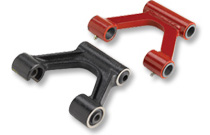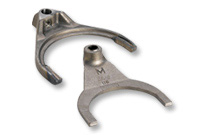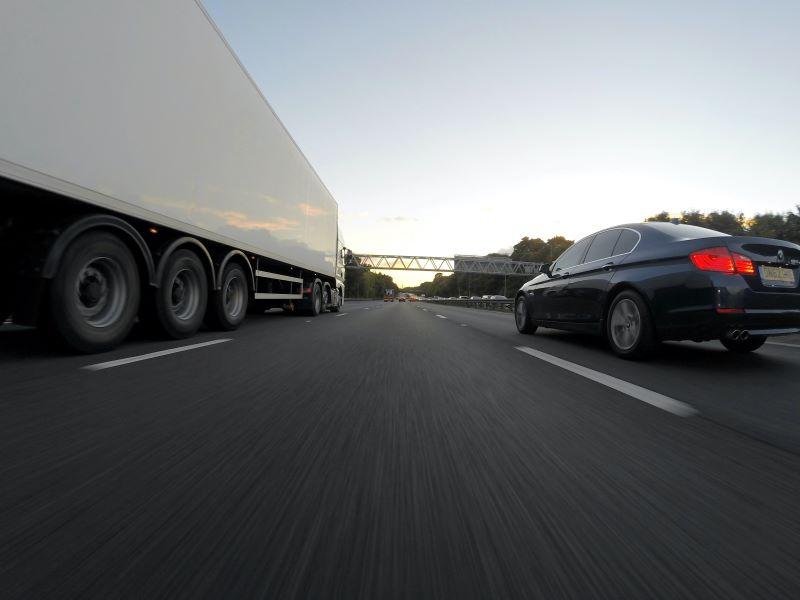It's rough out there on the road.
Today's transportation industry is under constant stress as supply chains strain to keep up with demand. Inevitably, that stress is passed on to commercial vehicles and their drivers, tasked with conveying cargo safely and efficiently to its destination. In these mission-critical applications, success is truly a sum of its parts — specifically, the heavy-duty truck parts which ensure everything works together consistently and without fail.
Fortunately, the physical demands of over-the-road trucking and the mechanical properties of ductile iron are very well-matched — it's strong enough for the heaviest loads and flexible enough to handle virtually any twist or turn.
What is a heavy-duty truck?
Before we get into ductile cast iron's applications in heavy-duty truck parts, let's first define what a heavy-duty truck is.
In the United States, commercial motor vehicles are classified into one of eight categories depending on their gross vehicle weight rating (GVWR) — the maximum weight at which the truck can safely operate, taking into account the combined weight of the vehicle, the driver and any passengers, fuel, and cargo.
Classes 1 through 3 comprise light-duty trucks — think along the lines of vans or pickups.
Classes 4 through 6 comprise medium-duty trucks — here we get into things like box trucks, delivery trucks, bucket trucks (such as those that may be used in agriculture), and schoolbuses. To drive any vehicle rated Class 6 or higher, one must obtain a CDL.
Finally, Classes 7 and 8 represent heavy-duty trucks. Class 7 (GWVR: 26,001 - 33,000 lbs.) covers smaller semis and many types of municipal vehicles such as street sweepers, garbage trucks, and mass transit buses. Class 8 (GWVR: 33,001+ lbs.) is the category where we find our big rigs, cement trucks, and dump trucks — so heavy are their responsibilities that they're often referred to as severe duty trucks.
Ductile cast iron applications for heavy-duty truck parts
Suspension systems
A vehicle's suspension system ensures a smooth, controlled ride over changes in terrain. Ductile iron castings may play several roles in a suspension system, thanks to attributes such as compression strength (components such as springs pushing together) and vibration damping (struts and shock absorbers).

Drivelines
The driveline translates power from the engine and transmission system into motion, helping the wheels to spin. Principal components include driveshafts, axle shafts, differentials, and joints. Longer, cylindrical parts like driveshafts are good candidates for ductile iron castings thanks to their exceptional ability to elongate. Ductile iron's superior tensile strength and yield strength will allow joints in the driveline configuration to bend at varying angles without breaking.
Steering systems
A truck's steering system is one of its most complex, with hundreds of interconnected parts working in tandem to responsively maneuver a vehicle weighing in at several tons. Class 8 truck parts clearly have their work cut out for them, but ductile iron is undaunted by severe duty. The operative words here are stability and control, and that requires tight, secure connections to reliably transmit steering wheel inputs down the steering column into the steering gearbox, and in turn the various rods, axles, arms, and other linkages that dominate the undercarriage.
Steering components such as tie rods are known to wear out quickly, so the fatigue strength of ductile iron is an asset in this setting. A positive strength-to-weight ratio means the assembly can be made to weigh less while still offering a strength on par with steel.
Transmissions
The heaviest trucks need powerful transmissions to reliably accelerate and decelerate over varied terrain, and to do that we need to get in gear. Whether a transmission system is automatic or manual, synchronized or unsynchronized, gears large (downshifting to lower gears = more torque and less speed) and small (upshifting to higher gears = less torque and more speed) play the main role here.
Urick Foundry utilizes techniques such as fine-grain sand casting and vertical in-mold inoculation to create near-net shape parts within extremely tight tolerances, such as those found in severe duty truck transmissions. Ductile iron's excellent abrasion resistance and fatigue strength help things hold up over the long haul.

Security systems
Secured loads are delivered on flatbeds or open trailers and must be firmly tied down and anchored in place — the consequences of that cargo shifting or falling could be catastrophic. Ductile cast iron might thus be incorporated into tie downs or chains, where its elasticity and tensile strength can endure the stress of the load without snapping.
Ductile puts in the miles
Ductile cast iron travels incredibly well, fueling several engineering applications in the transportation industry. To learn more about how we can further your enterprise, get in touch with us today.



